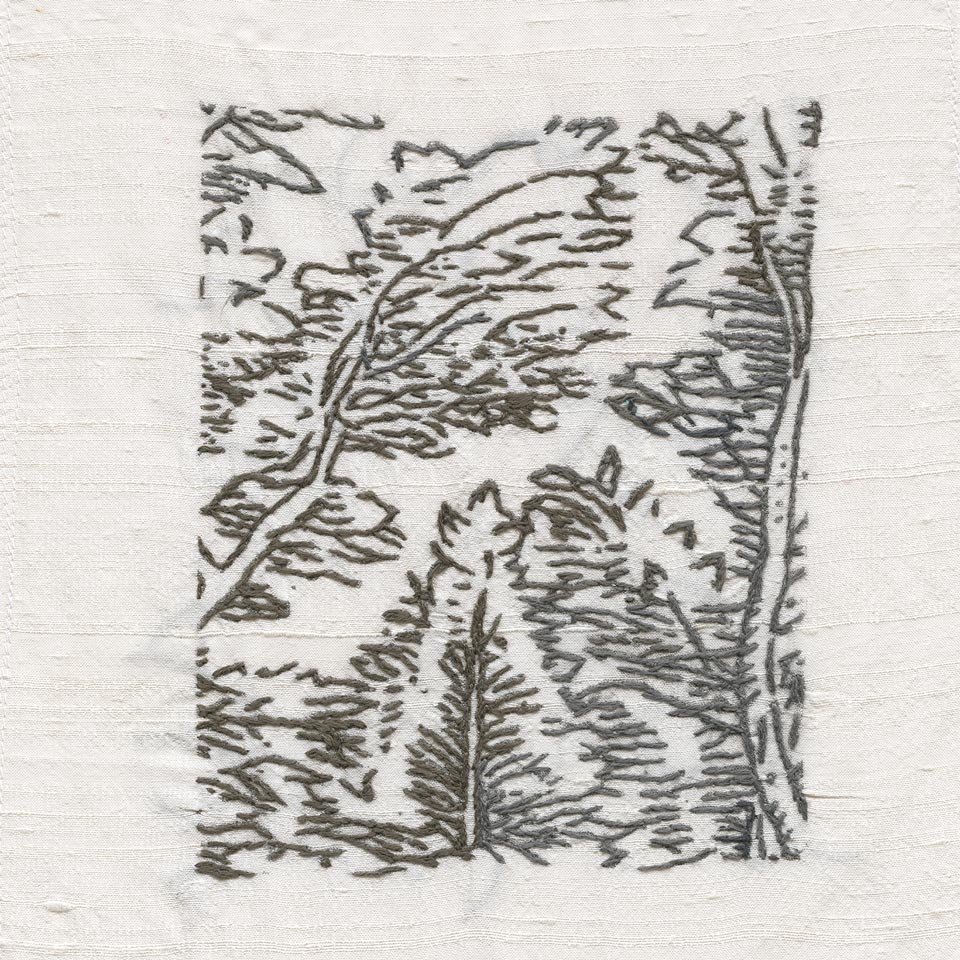Hanging By A Thread
2002-2021
Hanging By A Thread: Feminist Re-Vision
Koenker’s “copies” of the celebrated masters are gorgeous. The shift of media from the drawings/engravings to stitches on cloth introduces its own subtleties and originality. As the leaflet of attributions notes, the embroideries are “after” the masters, e.g., “After Baccio Bandini’s engraving after Botticelli’s drawing, Dante and Virgil in the Dark Wood, 1481” or “After engraving by Diderot and d’Alembert after drawing by Titian from Encyclopedie #1”—after the masters who themselves engaged in reinterpretations. The array of 132 framed embroideries—worked on by Koenker during periods of waiting between taking her children to appointments and lessons, and during work meetings—is an astonishing sight.
- On A Practice in Gestures by Jenny Penberthy, The Capilano Review
Hanging By A Thread: Feminist Re-Vision, an extensive series of small hand embroideries begun in 2002, spans nearly 2 decades. Working from photocopies of reproductions of 16th to early 19th century landscape drawings and engravings by male master artists taken from books, this work plays off the notion of copying. Details were enlarged, transferred onto silk and hand embroidered. I boldly include my own embroidered drawings among those of the Masters, challenging the idea that “anonymous was a woman.”
This body of work was done during time spent waiting: taking children to doctor, dental and orthodontic appointments, sports activities, art and music lessons, and during many hours of work meetings. These stolen moments became my studio time.
Historically, women were excluded from the studios of male masters with very few exceptions, such as Artemisia Gentileschi. Male masters made ART while women were limited in their creative expression to embroidery for the home and ecclesiastical needlework, particularly in England.
Still today many women, intimidated, convinced they can’t draw, stitch pre-fab kits rather than their own original images. The traditional sampler, whereby many girls and young women learned the alphabet as well as various stitches, is a reference to the status of women’s work. The value hierarchy surrounding art and craft is also questioned. Why is an original drawing generally more highly valued than an embroidery, which is usually based on a drawing, then stitched? At a distance these embroideries look like the master drawings and engravings they mimic. Matting and framing help to elevate them to the status of Art.
photos credit: Michael Love
Hanging By A Thread: Migrations
On the wall facing this compressed history of gendered artistic endeavour is the flip side, another kind of history. The artist-embroiderer can’t help but register the networks and patterns of knots and threads on the backs of the embroideries. Photocopied prints of these backs are pinned to the facing wall suggesting maps, so Koenker proposes, of the migratory routes of birds, viruses, and particularly people—refugees in flight from brutal regimes and changing climates. An entirely different experience of waiting is registered here—that of interminable waits at borders, customs checks, and other forms of impeded mobility. Hanging by a Thread is a richly layered work of art.
- On A Practice in Gestures by Jenny Penberthy, The Capilano Review
Hanging By A Thread: Migrations is a related series of prints taken from the reverse side of the embroideries, charting the fragile course of the winds of globalization and climate change.
Photocopied prints scanned from the reverse side of the embroidered works and simply pinned to the wall, they are a counterpoint to the studied, labour-intensive embroidery works. The scattered and knotted threads suggest the fragility of migratory journeys, mapping the imagined migration patterns of birds, insects, sea creatures, animals, viruses, plagues and humans.
photos credit: Michael Love








